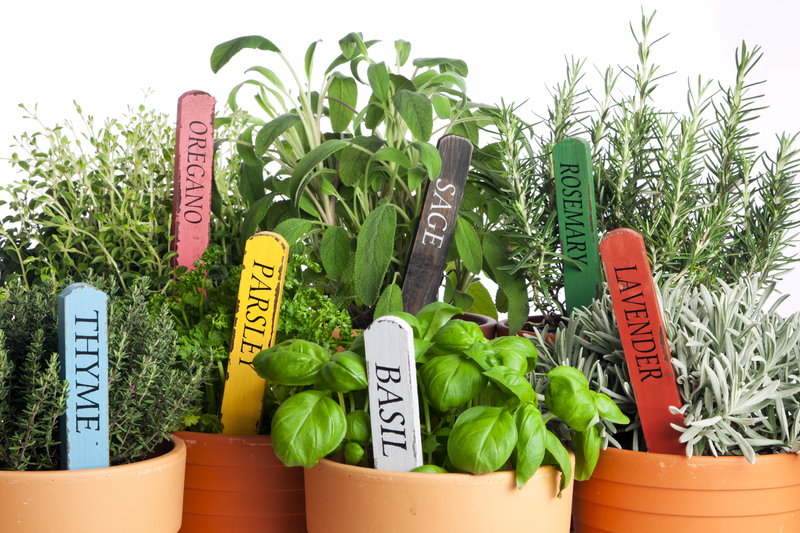Expert Advice on Protecting Gardens from Severe Weather
Posted on 23/06/2025
Expert Advice on Protecting Gardens from Severe Weather
As severe weather events become more frequent due to climate change, gardeners face increasing challenges in safeguarding their gardens. From torrential rains and gales, to heatwaves and frosts, the unpredictable forces of nature can cause significant damage to plants, soil, and landscape structures. Whether you're a seasoned horticulturist or a backyard enthusiast, learning how to protect your garden from severe weather is essential for long-term success.

Understanding the Threat: Types of Severe Weather Impacting Gardens
Before you can take steps to protect your garden from severe weather, it's important to understand the types of threats that may jeopardize your outdoor sanctuary:
- Heavy Rainfall & Flooding: Can lead to root rot, nutrient leaching, and soil erosion.
- High Winds & Storms: Cause breakage of branches, uprooting of plants, and damage to garden structures.
- Hail: Can shred leaves, break stems, and bruise fruits or flowers.
- Extreme Heat & Drought: Stress plants, dry out soil, and increase susceptibility to disease.
- Frost & Freezing Temperatures: Damage tender plants, cause cell rupture, and inhibit early growth.
Each of these conditions demands a customized approach for adequate garden protection from severe weather.
1. Preparing the Garden in Advance
Choose Suitable Plants and Positioning
The foundation of weatherproofing your garden starts with plant selection and strategic placement. Opt for varieties known for their resilience in your local climate. Planting wind-tolerant trees and shrubs as natural windbreaks can shelter more delicate species and garden beds.
- Research native plants that are naturally adapted to withstand local weather extremes.
- Stagger plant heights: position tall, sturdy species on the windward side of your property.
- Cluster plants with similar water and sun needs for ease of management during adverse conditions.
Soil Health Is Key
Healthy soil is better equipped to withstand severe weather. It retains water more efficiently, supports deep and robust root systems, and prevents erosion. Here are some expert soil tips:
- Incorporate organic matter like compost and mulch to improve structure and drainage.
- Maintain ground cover or use cover crops to protect bare soil from being washed or blown away.
- Mulch helps moderate soil temperature and suppresses weed growth, aiding plant recovery after storms.
Invest in Flexible Garden Structures
Garden structures--including stakes, cages, tunnels, and frames--can shield plants from high winds, hail, and heavy rain. When selecting materials, durability and flexibility are priorities:
- Use sturdy, weather-resistant materials like galvanized steel or treated wood for plant supports.
- Consider portable structures like cloches or row covers that can be deployed and removed as needed.
- Install hail netting or temporary canopies to dilute direct impact from falling ice or intense sun.
2. Defending Against Specific Severe Weather Events
Protection from Heavy Rain and Flooding
Floods and waterlogging can suffocate plant roots and wash away essential nutrients. Experts recommend the following preventive actions:
- Raise beds to promote drainage in areas prone to standing water.
- Create gentle slopes and swales to redirect flow away from vulnerable zones.
- Install rain barrels and drainage ditches to control excess rainfall.
- Use permeable paving or gravel paths to reduce surface runoff.
Wind and Storm Defense Strategies
Protecting your garden from strong winds requires both structural and botanical solutions:
- Establish living windbreaks using rows of dense shrubs or hardy trees.
- Use garden netting or shade cloth to break the impact of gales on tender beds.
- Stake tall plants securely and check ties regularly for signs of wear.
- Lay down containers and move fragile pots to sheltered spots before storms arrive.
Mitigating Hail Damage
Hailstorms can devastate delicate plants in minutes. The best expert advice includes:
- Deploy temporary covers such as mesh, fleece, or even old bedsheets during storm warnings.
- Install permanent hail netting in regions with frequent hail events.
- Choose plants with flexible stems or hardy leaves less likely to incur damage.
Surviving Heatwaves and Drought
Extreme heat and prolonged dry spells challenge garden sustainability. To guard against such stress:
- Water deeply, but less frequently, to encourage deep root growth.
- Apply a thick layer of mulch to conserve soil moisture and regulate ground temperature.
- Opt for drought-resistant species and xeriscaping where appropriate.
- Water in the early morning or late evening to reduce evaporation.
- Group pots and containers to maximize humidity and shade.
Frost and Cold Snap Preparation
Late frosts can break growing cycles and kill seedlings. Expert preventative steps include:
- Monitor weather forecasts for sudden cold spells.
- Use fleece, cloches, or cold frames to insulate tender plants overnight.
- Move container plants indoors or to sheltered locations during sub-zero temperatures.
- Avoid pruning late in the season, as new growth is more susceptible to frost damage.
3. Immediate Actions After Severe Weather
Assessing and Repairing the Damage
Once the storm passes, prompt assessment is crucial to aid your garden's recovery:
- Gently remove debris like twigs, leaves, and hail from plant surfaces.
- Check for broken stems or branches and prune cleanly to prevent disease.
- Inspect for waterlogged soil and aerate if necessary to restore oxygen flow.
- Re-apply mulch if weather has displaced existing layers.
Managing Plant Stress and Disease Risks
Like humans, plants can suffer from stress after severe weather events, making them more prone to pests and disease:
- Apply diluted liquid fertilizer to boost energy for recovery.
- Remove affected or diseased foliage to prevent fungal spread.
- Keep an eye out for unusual wilting, leaf spots, or insect activity post-storm.
4. Advanced Protection: Incorporating Technology and Innovation
Smart Irrigation and Weather Monitoring
Thanks to modern technology, it's now easier than ever to anticipate and prepare for severe weather:
- Install moisture sensors and automated irrigation to keep soil at optimal levels during dry spells.
- Subscribe to real-time weather alerts and mobile apps for local garden forecasts.
- Utilize remote cameras to inspect hard-to-reach areas after storms.
Permanent and Semi-Permanent Shelters
Additional shelter can make all the difference for sensitive plants:
- Construct greenhouses or polytunnels for year-round protection.
- Install retractable awnings or shade sails for flexible overhead coverage.
- Consider building raised beds with built-in supports for pop-up row covers.

5. Long-term Garden Resilience Strategies
Plan for Future Events
Building a resilient garden means continuously adapting based on lessons learned from each weather event:
- Keep a garden journal to track what works and what doesn't during different types of severe weather.
- Rotate crops and diversify plantings to reduce risk of total loss.
- Collaborate with local gardening groups to share tips, resources, and support.
Insurance and Record Keeping
For valuable perennials or high-investment gardens, consider:
- Documenting your garden layout with photos and notes for insurance or grant claims.
- Exploring policies covering storm damage to landscaping or costly specimens.
Summary: Ensure Your Garden Thrives Despite Severe Weather
As unpredictable weather becomes the norm, protecting your garden from severe weather is more important than ever. By making smart plant choices, investing in effective structures, maintaining healthy soil, leveraging technology, and staying vigilant, you can reduce the risk of damage and promote rapid recovery after any storm.
Remember, a well-prepared gardener is the best defense against nature's uncertainty. With the right combination of traditional wisdom and modern innovations, your garden can withstand even the harshest conditions and continue to flourish year-round.

